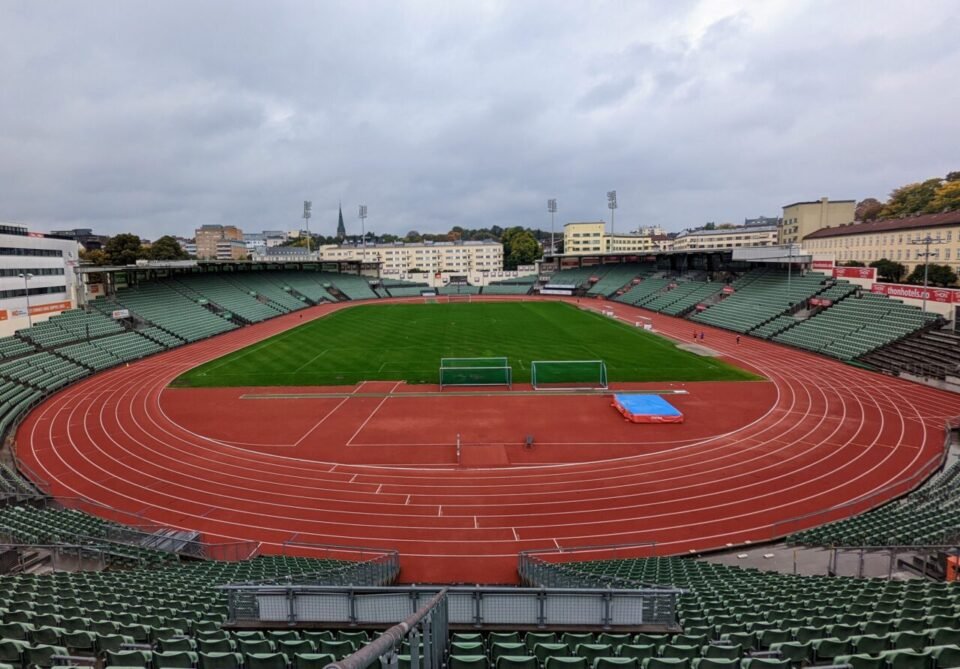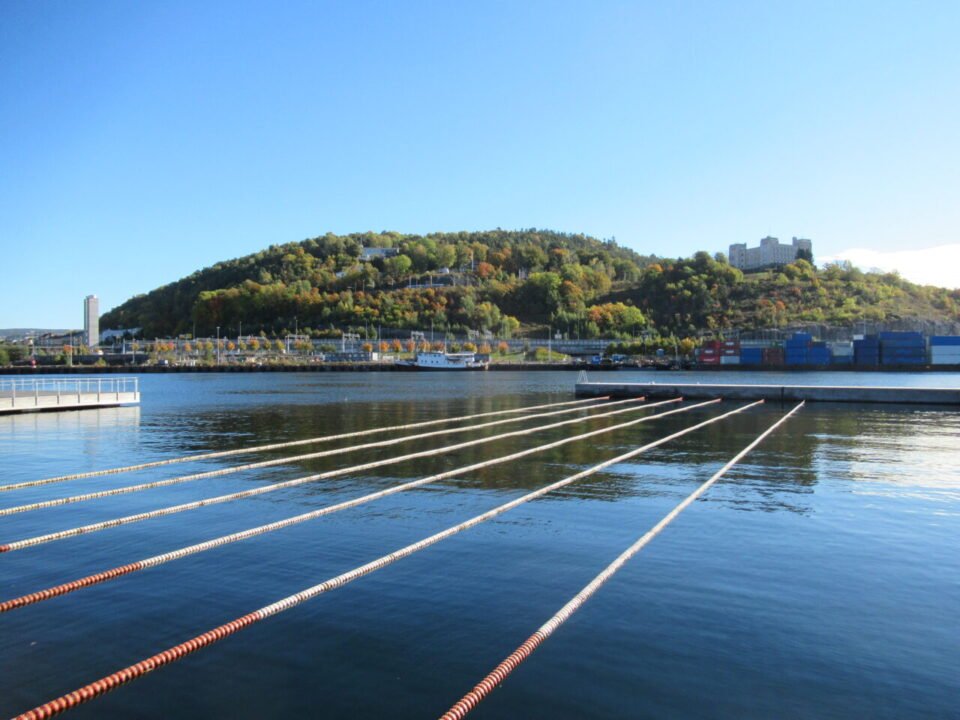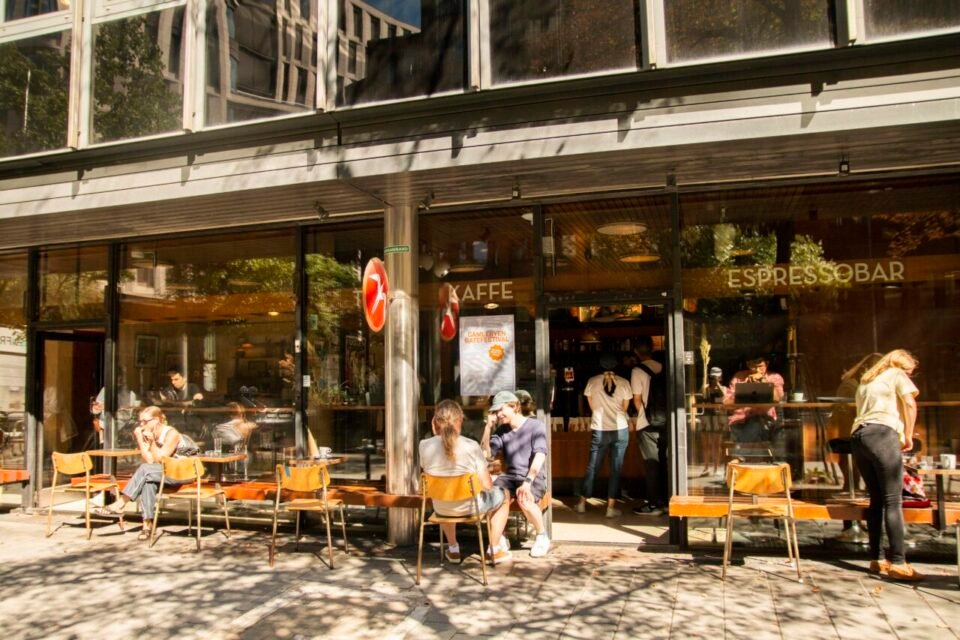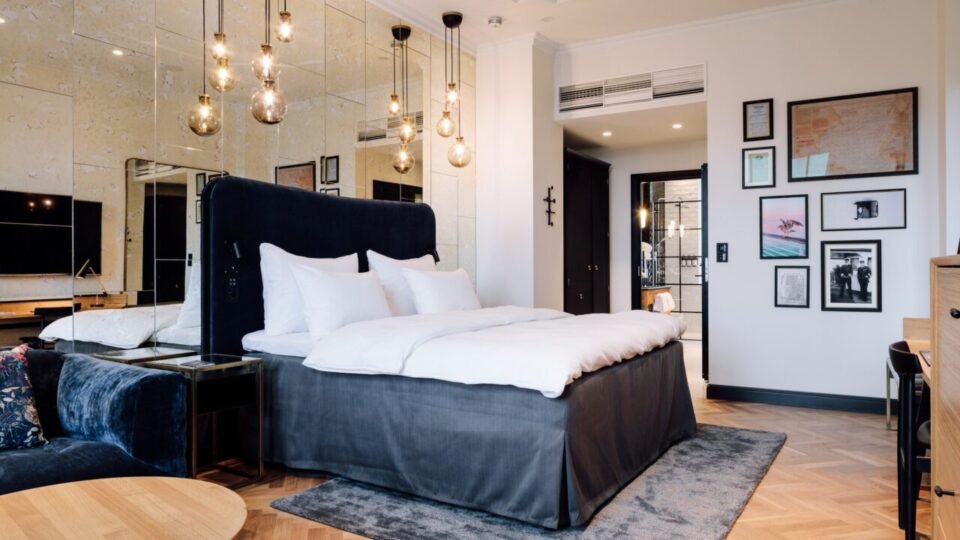Oslo City Guide

Though smaller than many European capital cities, Oslo manages to provide fantastic city life and a home for metropolitan population of 1.5 million people while maintaining access to the Norwegian outdoors. A mere 15-minute trip by train, bus or tram takes you into the wilderness, a commute you might not normally expect from a European capital city. Nestled between the Oslo fjord and the hilly forest of Nordmarka, it is the perfect city to follow sporting interests, while continuing your urban pursuits in the city.
To make the most of this Oslo city guide for endurance athletes, note a few patterns and features. Facilities are broken into categories according to their running, cycling or swimming focus. Finally, the Sleeping & Eating section towards the end of the guide provides an insight into good places for sleeping and fuelling during your time in Oslo. A full directory of Google Map-linked addresses are found in the Directory section.
Orientation & Logistics
Oslo is located in a bowl-shaped area, extending from the harbour to the north. The city core “Sentrum” fades into neighbouring counties and eventually reaches the green Nordmarka forest and Holmenkollen on the west side of town, signposting the orientation of this city guide. To the east of Sentrum, the modern plan and builds approaches the Haukåsen Radar to the East which roughly demarcates the city area.

Public transport in Oslo is regular and reliable, with trams, buses and a small metro efficiently connecting the city’s 6-mile span – Zone 1. Purchase single journey, 24-hour or 7-day passes via the Ruta app. It makes sense to book a 24-hour pass as soon as you cover four journeys in town, with the 7-day pass being considerable discount (worth roughly 12 journeys in total).
Passes with Ruter allow you to use all transport means: tram, buses and metro. For reaching Oslo’s city centre from the airport, plug in your destination and get and choose – it’s not that much quicker to use the express services, which cost more.
Though Oslo’s maritime setting takes the edge off the winter temperatures, December until late-February can bring prolonged freezing conditions and snow in the city. Temperatures can be as low as -20°C until March when a wet spring is followed by warm but not hot summer, and a mild autumn.
Daylight hours are worth noting during the winter – Oslo is nearly 60°N. The sun rises at 9:18am on the Winter Solstice on 21st December, setting at 4:09pm. During the summer solstice, it’s light at 4am and dark shortly after midnight.
Running
You’re spoilt for choice when it comes to running options in Oslo, the chief consideration being what shoes to pack for your visit. Whether you want to complete a continuous run along the waterfront, find a quiet park for hill intervals or complete a workout on track or trails, Oslo delivers. This range of facilities is available within three miles of each other – an enviable pearl of Scandinavian capital.

Originally established as a sports field 1908, Oslo’s Bislett Stadium has evolved over 100 years embracing speed skating during the winter, as well as summer track season. The stadium was revamped in 2005 complete with a 600m track beneath the grandstands. Probably not one for hurtling with sprints, but ideal if you’re looking to complete a tempo run or series of intervals when the weather is poor.
Less convenient but worth knowing about is the track at Sognsvann, a 3-minute jog from the end of the Tramway 5 station. College’s Sports Athletics Track Norwegian School of Sport Sciences.

Sognsvann, a lake north of the city and only ten minutes away by tube, is the “gateway” to the outdoors and the forest of Nordmarka and ideally suited for any kind of trail run. From Songnvann there is an 11km circuit to Ullevalseter where a Norwegian hytte (hut) serves Norwegian specialities. There is a longer trail, about 40km, which leads from Frognerseteren, the final stop on Line 1 on the T-Bane, to Kikut, an idyllic location beside a spectacular lake.
For more central routes, cut west to Frognerparken where you can run interrupted on tarmac and trail loops.
Cycling
For its small population Oslo covers a relatively wide area of farms, forest, fjord islands and beautiful lakes well connected by trails. These wrap Oslo to the north, with the main cycling gateways being on road and gravel.

During Spring, Summer and Autumn, the extensive and well groomed trails north of Oslo is the terrain to aim for. For road routes throughout the year, use gateways of Trondheimsveien on the east of town, and Griniveien on the west of town. These to latitudinal exit points will bend you back to the roads north of Oslo (not accessible when shooting straight north from Oslo itself). See Route
Oslo Dawn Patrol are an ambitious group who cycle on road on Tuesday and Thursday mornings, leaving at 5:40am. Wednesdays are Gravel days, running from March to October. Their 38km recommended route cuts due south along the east side of Oslofjord, encompassing a healthy 550m of vertical elevation.
Local bike company FARA Cycling is a cycling HQ for the city, offering a clubhouse as well as road and gravel bike rental – €80 per day. FARA also head out for group rides – see their Strava Club. For other road bike rental models in Oslo, contact Andrew Schafer of Candy Mountain who has a range of options – book ahead of browse at his workshop next to Rouleur bar and café (see below).
N.B. The Service Course, Oslo is now closed.
Swimming
It’s hard not to look towards the waterfront when plotting swims in Oslofjord. The two miles that moustache either side of the Munch museum are studded with floating saunas and swimmable water – hot property during the summer seasons. Alternatively, route to the elite indoor pool to for controlled temperatures.

For indoors swimming in a 50m pool, take transit north 1.5 miles to Tøyenbadet on the East side of town (not ultra convenient). T is closed until 2024 – in the meantime venture further to Økern bad. During summer months from mid-May, Frognerbadet is another Olympic-sized pool.
There are two sections For linear options, look to the Sørenga Sjøbad lanes (photo above).
Embracing Oslofjord for sauna and cold water dipping is a vital activity in Oslo. There are two locations – Langkaia and Aker Brygge. For Langkaia (overlooking the Munch Museum) there are two operators: Oslo Badstuforening which is slightly more affordable than KOK Sauna who also have a venue one mile away at Aker Brygge.
Sleeping & Eating
Considering Norwegian consumer prices is a consideration when entering the realm of eating out and booking hotels. But Oslo gives as much as it takes – healthy eateries are thriving and a pair of hotels sets a high standard.
Fuglen is a must-visit for coffee – they have two venues in Sentrum on the east of Oslo centre, and also Gamlebyen which is 1km to the east of Langkaia. Also note Supreme Roastworks in trendy Grünerløkka and Aker Brugge, as well as and Tim Wendelbo, a third wave coffee pathfinder for Oslo.

As for healthy and exciting food in Oslo, start with Lett who have several venues in Oslo. For Korean, go with J2 Restaurant. Traditional Norwegian food can be found at Engebret Cafe – warn children that reindeer is on the menu.
To maintain an endurance thread to your hospitality visits in Oslo, drop in at Rouleur which is a cycling-themed bar and café, neighbours with Candy Mountain Cyclery. Velochef is another cycling-themed venue in Sentrum with a range of delicious, healthy meals and celebrated breakfast menu.
HIMKOK is the place to visit for cocktails – frequently voted in the Top 50 Cocktail Bars of the Year.

For accommodation in Oslo, Amerikalinjen is a central boutique hotel located off Lankaia. If you’re looking to stay right on the doorstep of Sognsvann, Olympiatoppen Sportshotel is an appropriate choice for athletic travellers, with Lysebu offering a level of luxury.
During the summer, camping is the most affordable way to stay in Oslo and is also perhaps the best way to pursue outdoor activities. There are no restrictions were you can pitch a tent and Sognsvann is often the most popular location as it is only a short walk to the nearest supermarket and amenities. If you want something a step up from camping head to organised sites, such as Bogstad, beside a beautiful lake. You can pitch your tent or choose to hire one of the 46 cabins.
Directory
Amerikalinjen Hotel: +4721405900
Candy Mountain Cyclery: +4740898978
FARA Cycling: +4740602179
Frognerbadet: no number
Frognerparken: no number
Fuglen, Gamlebyen: no number
Fuglen, Sentrum: no number
KOK, Aker Brygge: no number
KOK, Langkaia: no number
Oslo Badstuforening: no number
Sommerro: +4721404900
Sørenga Sjøbad: no number